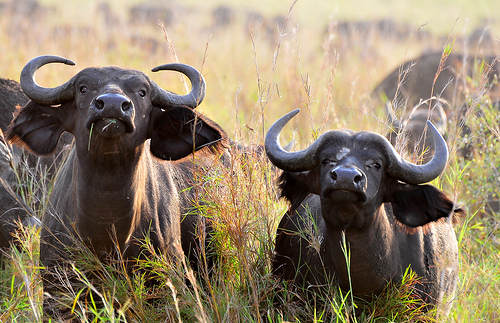Travellers choose Africa as a destination for safari wildlife game watching and to enjoy the sunny skies. The continent is the world’s leading destination for safaris which range from exotic to the very simple safaris.
Africa’s wide and diverse nature makes it complex and difficult to choose on the best region for a safari. Yet, the south, east and central parts of Africa are by far the preferred choices. These regions generally have well developed and fast developing tourism industries. There is a variety of amazing wildlife and in addition low to no visa requirements. Visitors to these areas mostly come from nations such as France, the UK, the USA, Germany, Netherlands and Portugal.
The following is a quick guide to some of the safari hot spots on the African continent.
East Africa
Most of countries in East Africa strongly depend on the tourism sector for generating income. Solid improvement in promoting and collaboration between these countries will ensure the success of this fundamental tourism industry.
Institutionalized criteria for hotels, eateries and different services over these nations will make it easier for voyagers to find suitable services. These countries have different natural and cultural resources that make tourism possible.
Kenya and Tanzania has become a popular safari destination because of the wildebeest migration in Serengeti National Park. This migration sees a large number of wildebeest, joined by different other animal species, move between Tanzania and Kenya. The perfect destinations to view this migration include Kenya’s Maasai Mara and Tanzania’s Serengeti National Parks.
And while in East Africa, don’t forget to visit Africa’s highest mountain – Mount Kilimanjaro in Tanzania’s Kilimanjaro National Park.
The Ngorongoro Crater Conservation Area is additionally an extraordinary choice with a variety of big 5 – the African elephant, white/dark rhinoceros, African lion, African leopards and the Cape wild buffalo – and won’t baffle.
Central Africa
With some kind of political in countries in central Africa, tourists can now visit the destinations though with caution.
The Democratic Republic of Congo (DRC), Rwanda and Uganda are incredible destinations to watch the rare and endangered mountain gorillas in the wild. The best places to view them include the Virunga National Park in the eastern DR. Congo, Volcanoes National Park in northwest part Rwanda, and Mgahinga Gorilla National Park in southwest part Uganda and Bwindi Impenetrable forest National Park in southwestern Uganda.
Different factors have threatened the population increase of these endangered primates, including poaching, disease, war and unrest and poverty. Today, because of conservation efforts, the population of mountain gorillas in the region is showing a steady growth. The way that numerous tourists want to get up close to these primates additionally drives conservation efforts, since tourism comes with economic improvement.
In the event that you’d prefer to partake in Africa’s best on foot chimpanzee tracking, take a Uganda tour visit and Kibale Forest National Park found in the Southern part of the country protecting moist evergreen rain forest the home to over 70 mammal species, most famously 13 species of primate including the chimpanzee. ![]()
Southern Africa
South Africa, Zimbabwe, Botswana, Zambia, Malawi and Namibia offer extremely diverse wildlife. This is due to the variety of biomes in the area.
Botswana’s Chobe National Park is home to the highest concentration of elephants in the world with over 70 000 of them. It found between the Okavango Delta and the Chobe River in the northeastern parts of Botswana. Likewise in Botswana, the Moremi Game Reserve, in the famous Okovango Delta, is the first wildlife reserve in Africa to be set up by local residents.
In Namibia’s Etosha National park in the northern part arid part of the country offer a great opportunity to sport the endangered black rhinoceros as well as flamingos in the salt pans.
The South Africa’s Kruger National Park is in its own group due to its variety of animals as well as the improved environmental management policies and techniques.
iSimangaliso Wetland Park was the first site to be awarded a World Heritage status in South Africa. It contains the country’s most of the remaining swamp forests and is Africa’s biggest estuarine system, which is partially closed water where fresh water from rivers and streams mix with salt water from the sea and it is the only destination in the world where you can find sharks, hippopotamus and crocodiles in the same body of water.

